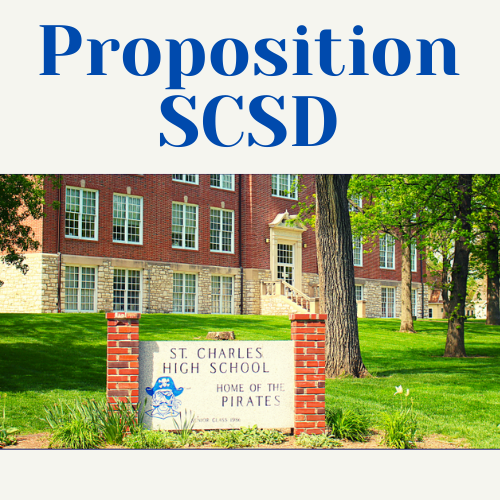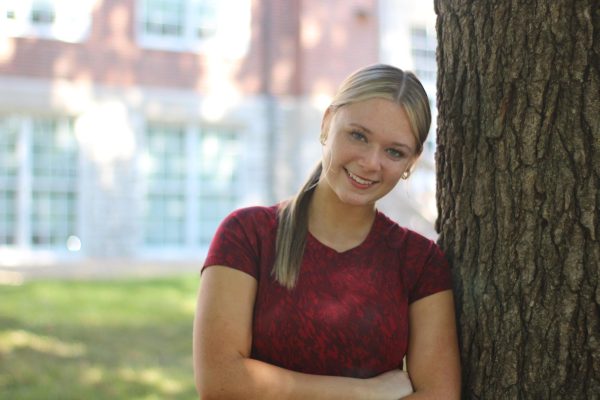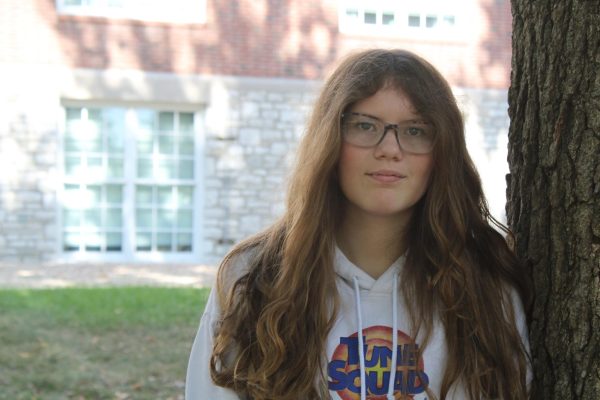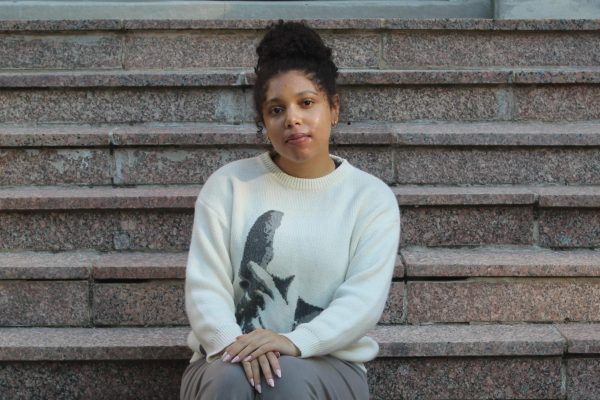A Yes for Proposition SCSD
A look into the recently passed bond which is funding capital projects district wide

On April 6, the community voted on Proposition SCSD and it was passed. This bond is going to be used to make many repairs, do updates, and to overall better the buildings of the St. Charles School District for years to come.
“There is basically a three to four year cycle where we have to look at supplying funds to be able to do projects in our school district,” said Superintendent Dr. Jason Sefrit. “Sometimes there are tax increases, but this is a no tax increase bond and it is basically to fund capital projects.”
Buildings in the district vary in age, but Sefrit and others believe this bond is going to be something which secures the future success of the district.
“If we don’t continue with projects like this, then you are going to see the buildings suffer. You’ll see buildings not stay up to what basically we expect our buildings to look like and it doesn’t matter if it’s a new building or an old building, there is maintenance in all of them,” Sefrit said. “We have obviously aging, wonderful historic buildings, but we have to keep them up.”
Joining the district in September of 2019, Facilities and Maintenance Director Josh Schaffer is a key figure in these upcoming projects coming from the bond. He understood and wanted to incorporate different upgrades that could save a lot of money overtime including LED lighting.
“As a fresh set of eyes coming in I saw a lot of things I wanted to do and wanted to change to make my mark here and I saw a number of things we really could improve on,”Schaffer said, “and that isn’t to understate the district because there are a lot of good things going on in the district, but I just saw opportunity to get to a higher level.”
Now that the proposition has been passed, there is a hope to get these projects going pretty quickly as they will enhance the environment of each school building and also involve technology and safety advances.
“Plans are in place and we call some of the projects quick start projects,” Sefrit said. “So it is about a three-year cycle where all these projects will be done in and there are specific projects we call quick start projects we will start immediately when school gets out.”
While this bond allows so many different things to be done in so many different places, there are many common main focuses at the different buildings. These updates have been deemed crucial even if they are not necessarily something particularly visible like air conditioning.
“I would say as far as how it affects us now and going into the future it is a lot of behind the scenes infrastructure,” Communications Coordinator Chris Bennett said. “From my standpoint when I think about this, it’s the LED lighting, HVAC systems and technological upgrades because all three of those things once they are put into place they are around for 10, 20, 30 years. So they are going to make our building more efficient and more technologically updated for the future.”
As this is not the first time the district has been involved with bonds, there can be comparisons to previous projects including the Early Childhood Center, but it all circles back to the community’s trust. Showing that in previous years the money has made a positive impact and also that the district is responsible for doing what they intend to accomplish is a big contributor towards the proposition passing.
“This will be my third bond issue since being in the district,” Bennett said. “We had one in 2014 that was also a no tax rate increase, we had one in 2017, and now this one in 2021 and one of the most important things I can do from a district or communications standpoint is 1) being transparent, with our constituents and our community and then, 2) making sure that we communicate with them after the bond issue has passed to let them know ‘Hey, all that stuff we said we were going to do with taxpayer dollars, we did it and we did it on time and we did it either on or under budget.’”
According to Sefrit, Schaffer, and Bennett they believe the LED lighting will dramatically improve the building atmosphere, but also save money overtime.
“We took a pretty aggressive approach with lighting, so we are basically not going to leave any stone unturned,” Schaffer said. “The entire district is going to get an LED sweep with lighting controls and occupancy sensors and things like that.”
While the lighting itself is going to be put in, these technical controls and sensors will play a big part in the new set up and not only advance each building physically, but also technologically.
“So if there happens to be an after school event or a meet the teacher night, and people leave and forget to turn lights off in the building they will automatically shut off at a specified time that we set,” Schaffer said.
Outside of updates and repairs involving things like HVAC systems and the lighting, there are some pretty significant projects that will be very visible to students and those at each individual school. For example at Null Elementary School, they are getting another space to separate the cafeteria and P.E. classes and it will act as a gym and storm shelter. That being said, the high schools are also both getting re-turfed.
 “I’m really excited about the resurfacing of our football fields, that hasn’t been talked about a lot,” Sefrit said. “We were one of the first ones to put in turf about like 10-12 years ago and at that point it was kind of nice to have, but it is a necessity now. From P.E classes, to any kind of practice those fields are well used.”
“I’m really excited about the resurfacing of our football fields, that hasn’t been talked about a lot,” Sefrit said. “We were one of the first ones to put in turf about like 10-12 years ago and at that point it was kind of nice to have, but it is a necessity now. From P.E classes, to any kind of practice those fields are well used.”
When hearing about all these projects, people might wonder why the district chose to spend money on these projects specifically.
“Dr. Charles Brazeale, our Assistant Superintendent of Business and Finance, as well as myself guided our principals in a process where the principals gathered a committee in their building,” Sefrit said. “That group started listing things that were priorities or things that were on a wish list.”
These groups eventually included many different people to go through what everyone deemed important to focus on and it consisted of principal, teachers, parents, and others. Every building is getting specific things and attention was paid to each facility.
“It’s a key to any bond issue, anything you do with funds that there is a balance and that everyone gets a piece of the pie,” Sefrit said. “So we looked at what we did three years ago and what the projects look like and went from there.”





